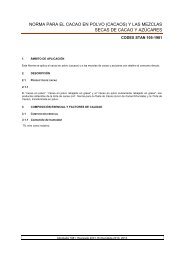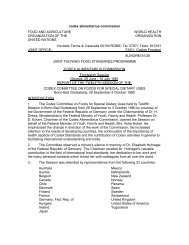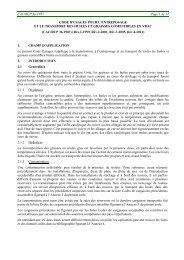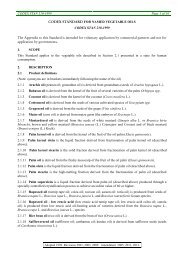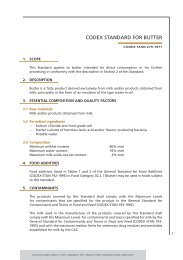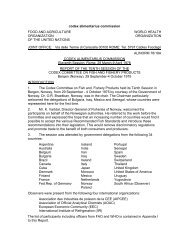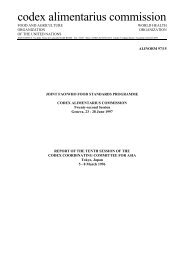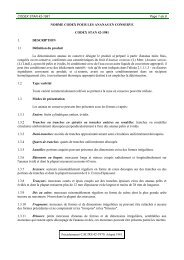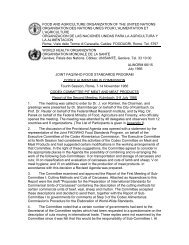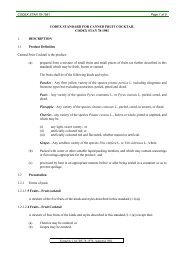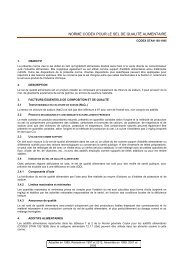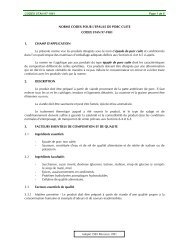REP13/FH JOINT FAO/WHO FOOD STANDARDS PROGRAMME ...
REP13/FH JOINT FAO/WHO FOOD STANDARDS PROGRAMME ...
REP13/FH JOINT FAO/WHO FOOD STANDARDS PROGRAMME ...
You also want an ePaper? Increase the reach of your titles
YUMPU automatically turns print PDFs into web optimized ePapers that Google loves.
<strong>REP13</strong>/<strong>FH</strong> Appendix IV 57<br />
5.7 Documentation and records<br />
Where practicable, a written food safety control plan that includes a written description of each of the<br />
hazards identified in assessing environmental hygiene, as well as the steps that will be implemented to<br />
address each hazard, should be prepared by the business operating the primary production. The description<br />
should include, but is not limited to, the following: an evaluation of the production site, water and distribution<br />
system, manure use and composting procedures, personnel illness reporting policy, sanitation procedures<br />
and training programs.<br />
The following are examples of the types of records that should be retained:<br />
Microbiological test results and trend analyses<br />
Water monitoring and test results<br />
Storage room temperature levels<br />
Employee training records<br />
Pest control records<br />
Cleaning and disinfection reports<br />
Equipment monitoring and maintenance records<br />
Inspection/audit records<br />
5.8 Recall procedures<br />
In the event of a foodborne illness outbreak associated with berries, maintaining appropriate records of<br />
production, processing, packaging and distribution may help to identify the source of contamination in the<br />
berry food chain and facilitate product recalls. Growers/packers/processors/distributors should consider<br />
developing and maintaining a traceability/product tracing system. The traceability/product tracing system<br />
should be designed and implemented according to the principles for Traceability/Products Tracing as a Tool<br />
within a Food Inspection and Certification System (CAC/GL 60-2006), especially to enable the withdrawal of<br />
the products, where necessary.<br />
Detailed records should be kept that link each supplier of the product with the immediate subsequent<br />
recipient of the berries throughout the food chain. The information needed to link each supplier should<br />
include, if available, the packer name, address, and phone number, date packed, date released, type of<br />
berry (e.g. strawberry, blueberry, etc.) including brand name, lot identification and number of lots, and<br />
transporter.<br />
SECTION 6 – ESTABLISHMENT: MAINTENANCE AND SANITATION<br />
6.1 Maintenance and Cleaning<br />
6.1.1 General<br />
Food contact surfaces should be cleaned and disinfected before the start and throughout the season of the<br />
specific fruit to ensure microbial pathogens do not become established in the facility or on the equipment.<br />
6.1.2 Cleaning procedures and methods<br />
Written SOPs should be developed and implemented for the cleaning and disinfection of equipment used for<br />
post-harvest treatment.<br />
SECTION 8 – TRANSPORTATION<br />
Refer to the Code of Practice for the Packaging and Transport of Fresh Fruits and Vegetables (CAC/RCP<br />
44-1995).



